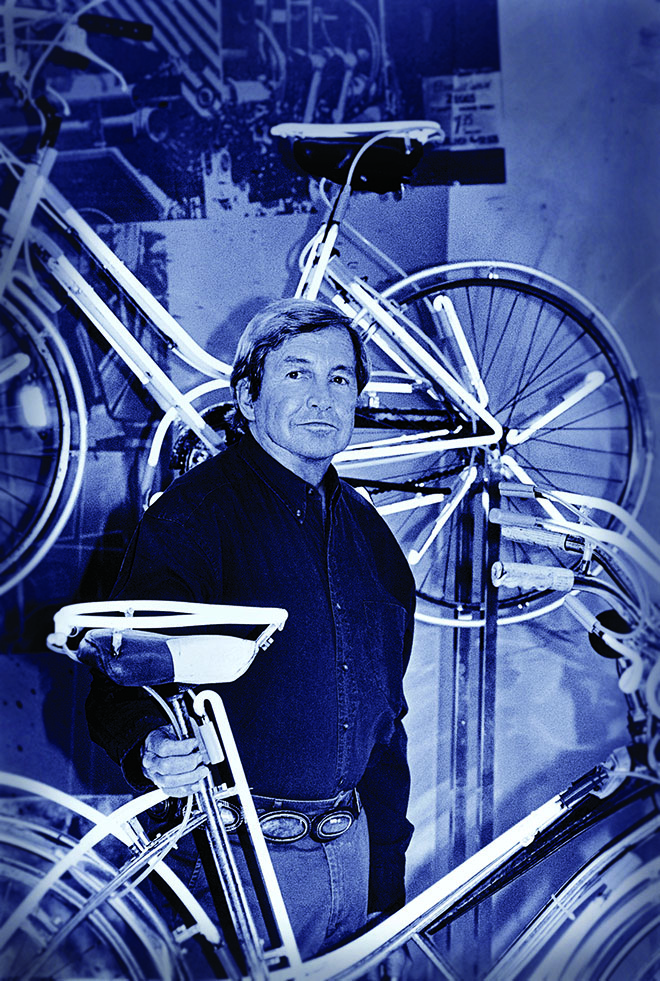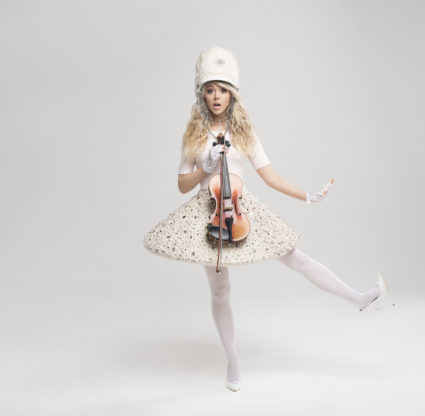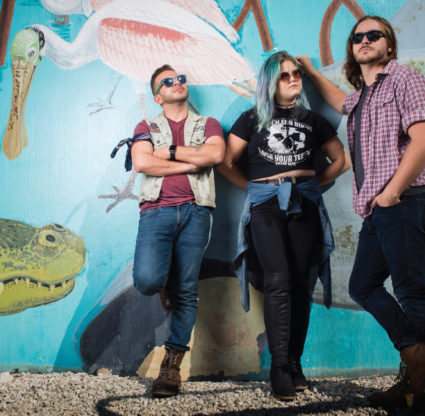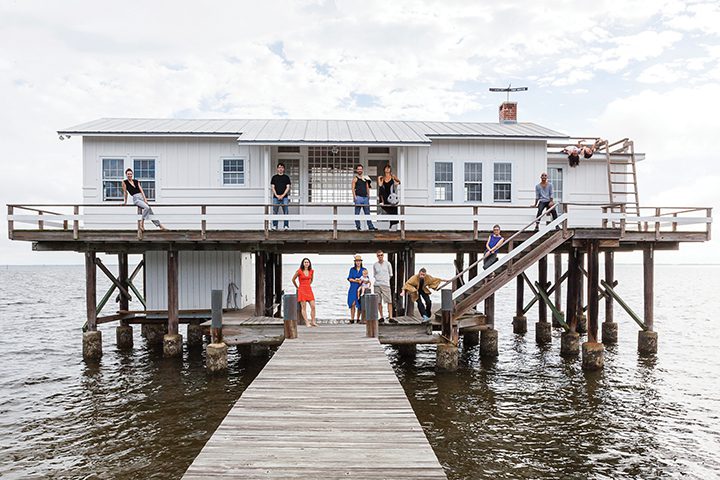In 1971, middle-aged and out of sorts, the famous artist Robert Rauschenberg moved from New York City to Captiva Island in Florida. “I got so depressed that I went to an astrologer,” he said later in an interview. “Everybody I knew was breaking up. Everything was falling apart. There was such an abundance of bad news.”
The astrologer told him he needed to rejuvenate his spirit. So, according to Robert Rauschenberg by art historian Sam Hunter, he fled to the tropics. But this was no vacation. He erected a campus of studios and guest houses on Captiva and changed his address. Rauschenberg wasn’t leaving. Over the next few decades, he presided over a colony of disciple-assistants, awash in alcohol and art. He hosted celebrity beachside dinner parties and churned out works by the thousands. His wealth soared. He slept late, swam in the Gulf, guzzled Jack Daniels, dined at midnight, worked into the morning and awoke around 1 p.m. to do it all again. For decades, Captiva was Camelot, and Rauschenberg was King Arthur.
Then, in 2008, the monarch died, and his kingdom fell to factions.
For the assistants, dismantling the hermitage and shipping it to storage was a final, somber debt to a brilliant mentor. Meanwhile, three close friends, whom Rauschenberg had named as trustees, paid themselves millions in fees to manage these chores. Rauschenberg, in his trust, never stipulated how much of his $606 million they deserved. So the three trustees set their own price: $60 million, split three ways. One of them complained the weighty responsibility was giving him stomach problems. Another admitted, in voicemail messages played at deposition, to the president of Rauschenberg’s charity foundation in a rambling late-night voice message that he was rich enough and didn’t even “need that kinda money.” The Robert Rauschenberg Foundation, named as the ultimate trust beneficiary, was outraged and filed suit.
Months went by. Appeals followed motions. The press caught wind. In August, The New York Times exposed the “battle” taking place in the void left by a “bighearted man.” The decisive clash will likely unfold dramatically as early as this month in a Lee County trial, say lawyers on both sides. The lawyer for the trustees credits his clients for more than tripling the value of the trust, to $2.3 billion; a mere $20 million each, therefore, is fair compensation, he says. The Robert Rauschenberg Foundation disputes that figure and premise.
The trustees themselves, meanwhile, declined to comment because, as one of their secretaries said, they “believe Bob would not have wanted these issues aired so publicly.”
And they’re probably right. Rauschenberg’s sister Janet Begneaud says of her cremated brother, “If we hadn’t burned him up, he’d be turning over in his grave.”
–
Rauschenberg ranks among Andy Warhol, Jasper Johns, Marcel Duchamp and Jackson Pollock in terms of 20th century influence. The Rauschenberg biographer Calvin Tomkins wrote in 2005 that new artists “might not even realize they’re quoting Rauschenberg” because his style “has been so thoroughly assimilated.”
Unlike the others, who primarily painted or mostly used found objects, Rauschenberg did everything. He welded and painted and photographed and stitched and sculpted. His contribution was to collage, and also to social commentary.
Summer Knight Glut is typical of Rauschenberg: discarded miscellany assembled in a culturally relevant way. Created in 1987, it is scrap metal decorated with gas station parts, including a pump and a can dangling at the end of a chain.
This autumn, Summer Knight Glut spent a few months on a white wall in Manhattan’s trendy Chelsea neighborhood. It was part of an exhibit on climate change funded by the Robert Rauschenberg Foundation and held at the Rauschenberg Project Space, which is also funded by the foundation. It’s possible that Rauschenberg will be remembered as much for his philanthropy as for his art.
Aside from the foundation, which awards grants and pays for an artist residency program at the Captiva property, Rauschenberg parted with heaps of money for various other causes. He funded AIDS research, environmental summits, Democratic politicians and an abused women’s shelter, and created a nonprofit called Change Inc. to give emergency grants to actual starving artists.
Christopher Rauschenberg, a photographer in Portland, Ore., says his father wouldn’t have considered himself “generous.” Rather, he viewed his money as a means more than a possession. After Rauschenberg died, at 82, the trustees put on a series of memorials. Several friends of his father approached him to praise Rauschenberg for paying their mortgages when money was tight. “He was a team player,” says Christopher Rauschenberg, who has followed that example, spending his career in art and nonprofits.
Now chairman of the Robert Rauschenberg Foundation board of directors, Christopher Rauschenberg says he can’t understand why the trustees want to siphon $60 million from the charity’s mission. His frustration is not personal; all three trustees are his father’s closest friends and people he has known for years. One of them, Darryl Pottorf, was Rauschenberg’s assistant and confidant for decades, and The New York Times obituary listed him as Rauschenberg’s surviving “companion.”
“I think it’s a misunderstanding of world views,” Christopher Rauschenberg said by phone from Oregon. It’s a nonprofit, I-have-enough outlook versus a for-profit, I-earned-this conviction. “Even if you felt like you were entitled to a huge chunk of money, why would you want to take it away from Bob’s foundation?” (Everyone, even his son, calls him Bob.)
I asked what his father might say if he were alive. Christopher Rauschenberg considered aloud. “Maybe he’d say, ‘Of course. These are my dear friends. They can keep tens of millions of dollars.’ But I don’t think so.”
–
Pottorf, 61, lives on Laika Lane in Captiva, down the street from the Rauschenberg home he inherited and just up the beach from the popular tourist restaurant The Mucky Duck. And he is an artist himself. Raised in Florida, Pottorf studied at the University of South Florida and taught a course on human potential at Edison College. In the 1970s, Florida State University sent him to Florence, Italy, to study art. There, in 1976, he met Rauschenberg. Upon their return to the States, Rauschenberg hired him for a job: painting the walls of the new Captiva residences.
In 1981, Pottorf helped Rauschenberg create the American Pewter series of lithographs with William S. Burroughs. After that, their relationship became extremely close. In a 2012 deposition, Pottorf explained that Rauschenberg entrusted him with every part of his life, from his art to his personal finances. They were so close that the attorney for the foundation asked, “Did you have any romantic relationship with him?” Pottorf responded, “It was more of a partnership and a grand friend.” As Rauschenberg’s health decayed in the final years of his life, Pottorf became his right arm; a stroke rendered Rauschenberg’s useless. With the aid of Pottorf and a troop of helpers, they continued to make art.
Meanwhile, Pottorf the artist became fairly prominent in his own right. In that rambling voice message, he told foundation director Christy MacLear, “I’m already a well-known artist. I’m rated in the top 7 percent for investment value.” And he has said his gross income is usually between $400,000 and $500,000, which at one time included $120,000 from Rauschenberg. In what might be his only review in The New York Times, from 2003, the author commended the work’s high quality but observed that Pottorf ’s art looks like a “half-baked” Rauschenberg or Johns. “He ends up turning good steak into hamburger.”
From 2005 until Rauschenberg died of heart failure May 12, 2008, Pottorf says he began performing duties of the trust. But no one wrote down a record of the work. Rauschenberg was dyslexic and inclined, it seems, to dictate whatever needed to be done. The other two trustees were also close friends. Bill Goldston and Rauschenberg were partners in a print-making business. Bennet Grutman became Rauschenberg’s trusted accountant in 1989. For Rauschenberg, people were always on hand and willing to help—it just wasn’t always clear whether they were working as trustees, employees or friends.
“I was with him seven days a week,” Pottorf said in the deposition. “And often, I’d help the nurse put him to bed most nights, and I’d sit there and he would tell me and say that he wanted this done, he wanted that done. Of course, there are no recordings of that.”
In early May 2008, Rauschenberg was in a New York hospital for hip surgery, but there were complications with his intestines. His prognosis was poor. Worse, his doctor said he had a cold. “Roy Lichtenstein went in with just a cold and died of pneumonia,” Pottorf said in his deposition. “Warhol died of pneumonia. I was not going to let Rauschenberg be number three.”
So he chartered a private ambulance jet to ferry Rauschenberg and his doctors to Florida. A few days later, Rauschenberg died at 11:42 p.m. at his Captiva home.
–
An age had ended, and everything was changing. In the summer of 2010, Pottorf, Goldston and Grutman were still board members of the Robert Rauschenberg Foundation when word came out they were seeking $60 million in fees. This meant, in effect, that they were running a nonprofit from which they hoped to profit. It’s unclear who pointed out the conflict of interest to them or whether they realized it on their own. But by March 2011, Goldston and Grutman had both resigned from the board.
Around that time, Pottorf began calling MacLear, the new foundation director. In a single week in May, he left her more than 75 voice messages that have been described as “threatening” by a foundation spokesman. He complained that she had never even met Rauschenberg. “I’m being thrown in the dirt,” he told her. “And when you throw me in the dirt it’s like throwing Bob in the dirt.” At one point, Pottorf seemed to admit the fees were “absurd.” A month later, Pottorf took an indefinite leave of absence.
But by that summer, each trustee had already paid himself about $2.7 million from the trust, they acknowledged in court documents. Grutman, the accountant, recommended the figure. Subsequently, they agreed to suspend further payments until the lawsuit was resolved.
Robert W. Goldman, an attorney for the Robert Rauschenberg Foundation, said in a statement that “Bob Rauschenberg primarily intended to benefit the charitable foundation he created.” The law allows for a reasonable fee, he says, but $60 million is not reasonable. “Every dollar paid in trustees’ fees is a dollar Bob’s foundation will not have to do the good works Bob envisioned.”
The key expert so far in the Robert Rauschenberg Foundation lawsuit is a Naples estate lawyer named Laird A. Lile. In an affidavit, he says that although trustees can legally pay themselves fees, “that power is not unbridled and must be exercised prudently.” He said the $5.7 million paid so far “is grossly excessive” and “constitutes a breach of fiduciary duties” to conserve trust assets.
Although the trustees did not keep records of the hours they worked on the trust, Lile said a typical trustee in Southwest Florida might gross $350,000 working full time for two years. If the court gives them $60 million, Lile concluded, it will have approved a $40,000 hourly rate.
–
Sometimes, when great artists die, their stock of paintings floods the market. Like any other asset, a sudden tidal wave of availability can crush the value of even the most coveted artists.
When Mark Rothko died, the executors of his estate, three close friends, became infamous for their mishandling of it. The Rothko family accused them of squandering estate money and selling off scores of paintings for less than market value. The lawsuit was a sensation in the New York papers in the 1970s.
The genius of Pottorf, Goldston and Grutman, says their attorney, Mike Gay, is that they knew how quickly Rauschenberg’s art could lose value and took expert steps to avoid it. When he died, they immediately pulled Rauschenberg’s art off the market. Then they called the high-end auction houses to have the collection appraised.
With a market starved for Rauschenbergs, the trustees took the art on a memorial tour with several stops in top galleries both locally and internationally—New York City, Los Angeles and Venice, Italy. They arranged for Rauschenberg’s entire inventory to be kept in a new storage facility in Mount Vernon, N.Y. They copyrighted Rauschenberg’s signature and hosted an exhibition and a limited sale at New York’s Gagosian Gallery. Later, they landed a major sale: Short Circuit went to the Chicago Institute of Art for an estimated $15 million to $20 million, The New York Times reported.
“I know how careful you have to be not to lose what something is built on, and it can happen very easily,” Goldston, the printmaker, said in a deposition. “So I became obsessed with this idea.” They chose a gallery, printed catalogues and dealt with fakes. Before Rauschenberg died, a Captiva employee had dug some scraps out of the garbage and tried to pass them off as Rauschenbergs. The trustees had to resolve that lawsuit. To handle all the work, they managed an army of lawyers, accountants and auditors.
Meanwhile, there was enormous pressure on them to perform. If the trust value fell or if it did not realize adequate growth, it could be grounds for lawsuits. To mitigate their exposure, the trustees bought liability insurance.
All of this affected Goldston greatly, he said in his deposition. “We did that for four years,” he said. “I lost 12 pounds. I developed a stomach issue just feeling the responsibility of taking care of that work and that image.” All told, the trustees say, they more than tripled the value of the trust and helped the foundation avoid “millions of dollars of taxes.” (The foundation maintains that the trustees had no right to do any of these things, a point that will be central in the trial. Rauschenberg’s written directives, they say, required the trust be turned over to the foundation immediately after taxes were settled—without gallery shows or memorial tours.)
“In the art world, there are masterpieces that are studied and recognized. To me, the work of these trustees is a masterpiece in terms of handling a trust,” Gay says. “They did everything right.”
–
The Rauschenberg case has not exploded like Rothko’s did. But the potential exists when the trial commences. One question remains unclear: Why didn’t Rauschenberg just stipulate the fees in his trust?
None of the lawyers nor Christopher Rauschenberg know the answer. Pre-arranging the fees is common for professional trustees, agencies that specialize in managing trusts. In Florida, where the law says “reasonable fees,” some guidelines would surely have been useful.
The one person who might know is a New York lawyer named Edward L. Peck. He was Rauschenberg’s attorney who prepared the estate and trust documents. (He has also done work for the trustees and for the foundation, according to conflict-of-interest allegations from the foundation.) Gay suggested that perhaps because he is a lawyer from New York, he wasn’t as familiar with Florida law. Peck, reached by phone, cited his firm’s policy on ongoing litigation and declined to comment.
Christopher Rauschenberg told me he’s eager for the foundation to move beyond this. If a judge rules $60 million is fair, he says he won’t begrudge the trustees. But “it would be painful.”
As the foundation and the trustees stake their claims in the name of Rauschenberg, the artist’s voice has been lost. “I wish he could come back alive for one board meeting,” Pottorf has said. “It would all be straightened out.”
But an incident from Rauschenberg’s life may be instructive. In the 1960s, Rauschenberg exhibited some works in Florence. One Italian critic was not a fan of collage. “His conclusion, after a good deal of scathing prose, was that the works of Robert Rauschenberg should be thrown into the Arno,” Tomkins wrote in his book Off the Wall: A Portrait of Robert Rauschenberg.
That Sunday, Rauschenberg paid a visit to a deep, secluded section of the river, then wrote the critic. “I took your advice.”





